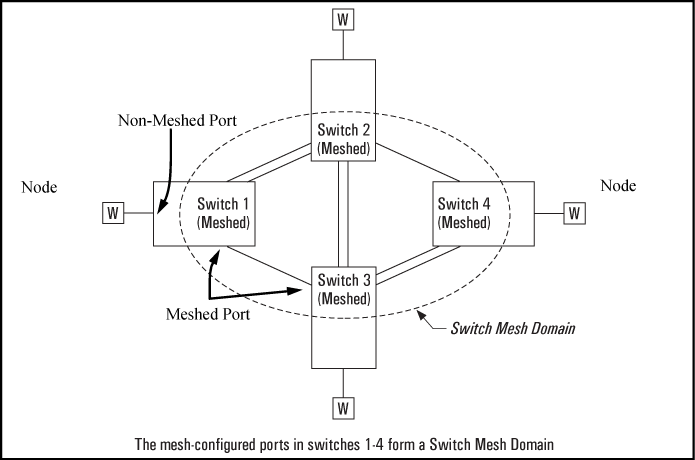|
|
|
![[NOTE: ]](images/note.gif) |
NOTE: All commands previously in the Summary of commands table are indexed under the entry Command syntax. |
|
|
Switch meshing is a load-balancing technology that enhances reliability and performance in these ways:
-
Provides significantly better bandwidth utilization than either Spanning Tree Protocol (MSTP) or standard port trunking.
-
Uses redundant links that remain open to carry traffic, removing any single point of failure for disabling the network, and allowing quick responses to individual link failures. This also helps to maximize investments in ports and cabling.
-
Unlike trunked ports, the ports in a switch mesh can be of different types and speeds (10 and 100 Mbps, gigabit, and 10 gigabit). For example, a 10Base-FL port and a 1GB port can be included in the same switch mesh.
Using multiple switches redundantly linked together to form a meshed switch domain, switch meshing dynamically distributes traffic across load-balanced switch paths by seeking the fastest paths for new traffic between nodes. In actual operation, the switch mesh periodically determines the lowest latency paths, then assigns these paths as the need arises. The path assignment remains until the related MAC address entry times out. The mesh sees later traffic between the same nodes as new traffic, and may assign a different path, depending on conditions at the time. For example, at one time the best path from node A to node B is through switch 2. However, if traffic between node A and node B ceases long enough for the path assignment to age out, then the next time node A has traffic for node B, the assigned path between these nodes may be through switch 3 if network conditions have changed significantly.
|
|
|
![[NOTE: ]](images/note.gif) |
NOTE: The |
|
|
Because redundant paths are active, meshing adjusts quickly to link failures. If a link in the mesh fails, the fast convergence time designed into meshing typically has an alternate route selected in less than a second for traffic that was destined for the failed link.
